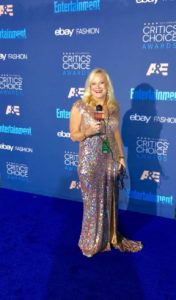
22nd Critics Choice Awards and Red Carpet Interviews by Sarah Knight Adamson
The 22nd Annual Critics Choice Awards, which includes the Broadcast Film Critics Association and Television Journalists Association Red [Blue] Carpet, was the spotlight Sunday evening, December 11, 2016. The show aired live on A&E from Santa Monica’s Barker Hangar, with the stars shining brightly as they walked, talked, and, in some cases, sashayed down the carpet into the event. Due to the fact that the date was moved up a month earlier than previous years, the December date brings “Hollywood notice” as the first televised film awards show leading up to the Academy Awards. On the whole, the move proved to be a huge success as talent seized the opportunity to mingle with critics and pose for photos, all while promoting their work. It should be noted that TV was also honored, which gave talent a chance to enlighten viewers about their projects, leading up to the Golden Globe Awards. All things considered, it was a win-win, as this critic appreciated the overflowing conversations with talent and the talent seemed to enjoy the limelight.
Hosted by actor and comedian T.J. Miller, the seated dinner was a relaxing way to view the show while conversing with talent. So who were the big winners?
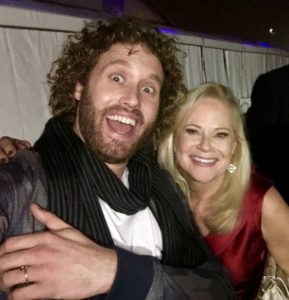
La La Land took home eight awards, the most of the night, including Best Picture, Best Director, and Best Original Screenplay (a tie) for Damien Chazelle, Best Cinematography for Linus Sandgren, Best Production Design for David Wasco and Sandy Reynolds-Wasco, Best Editing for Tom Cross, Best Song and Best Score for Justin Hurwitz.
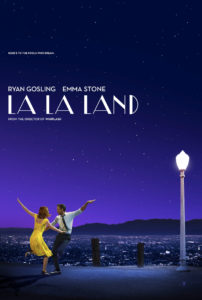
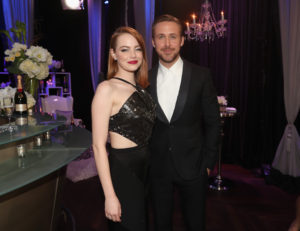
The acting awards went to Casey Affleck, Best Actor for his work in Manchester by the Sea, and Natalie Portman, Best Actress for Jackie. The Best Supporting Actor award went to Mahershala Ali for Moonlight, and Best Supporting Actress to Viola Davis for her performance in Fences.

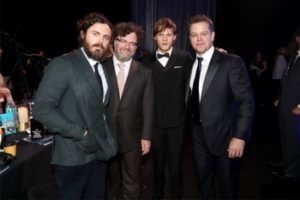
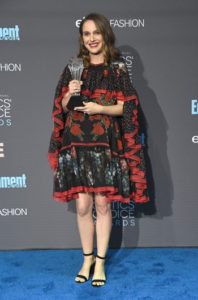

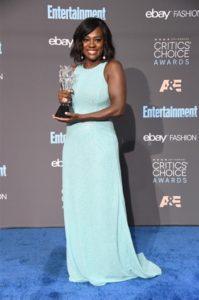
The People v. O.J. Simpson (FX) took home four trophies, including Best Movie Made for Television or Limited Series. Sarah Paulson won for Best Actress in a Movie Made for Television or Limited Series, Courtney B. Vance for Best Actor in a Movie Made for Television or Limited Series, and Sterling K. Brown for Best Supporting Actor in a Movie Made for Television or Limited Series. Silicon Valley (HBO) won for Best Comedy Series, and Game of Thrones (HBO) won for Best Drama Series.
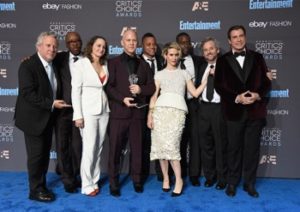
Viola Davis received the first-ever #SeeHer Award presented by the Association of National Advertisers in conjunction with A&E Network. Ryan Reynolds was the recipient of Entertainment Weekly’s Entertainer of the Year Award. See the complete list of winners at the end of the Red Carpet interviews.
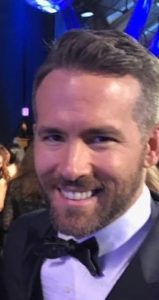
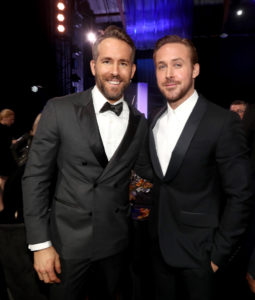
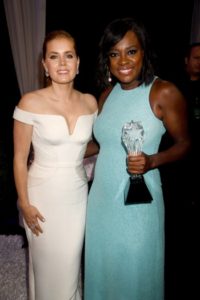
Red Carpet highlights consisted of fourteen different interviews with directors, producers, writers, actors, cinematographers, special effects talent, photographers, music composers, and musicians.
Michael T. “Mykelti” Williamson, known for his role as Bubba in Forest Gump, 1994, stars in Fences as Denzel Washington’s older brother, even though he is actually three years younger. He was on Broadway with Washington in the Tony award-winning play that is set in 1950s Pittsburgh. And how different was the film experience?
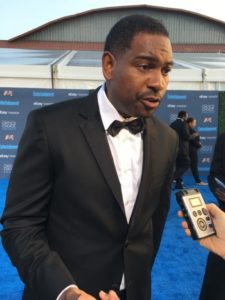
“Well, I was familiar with August Wilson’s material. We had August Wilson’s original screenplay, which he’s nominated for tonight. It was actually like a brand new beginning. It was a new beginning, because it’s a different approach. It’s not the same approach as live theater, where you have to project to the person in the back row. It’s much more intimate. Of course, you bring truth no matter what you do. It’s much more intimate, like you and I talking right now.”
Williamson’s character, Gabe Maxson, suffers from a head injury he acquired in World War II that left him mentally impaired. As a result, the children in the neighborhood torment him.
He talked about the film experience and his responsibility to portray the character as authentically as possible as well as taking the work home with him.
“I feel privileged to have played this part, but it did have me second-guessing my own decisions and my own thoughts for a while because the work is too important. When you represent a certain group of people, it’s not just another character; it’s much broader. When you consider that, this is also somebody’s child, then it becomes a huge responsibility.”
I detected a resemblance between Williamson and Denzel; I asked him if anyone else had noticed.
“I hear that a lot, and my pastor, sometimes … Denzel and I go to the same church.
“Sometimes my wife and I get tickled because he’ll say, ‘We got Mykelti in the house. Mykelti Washington, everybody.’ And we laugh. That’s the funniest thing.”
I answered, “That’s great. You know it’s a compliment, of course.”
“Listen. I’m a huge fan of Denzel’s. I think he’s amazing. I think he’s very easy to look at. You know what I mean? He’s pleasing on the eyes and the heart.”
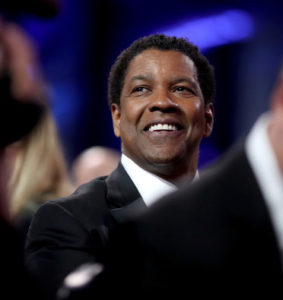
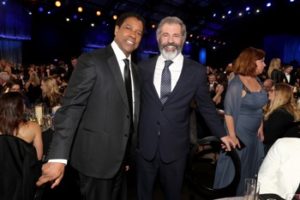
I said, “Oh yeah, I’m looking too! What kind of atmosphere did he bring to the set every day?”
Williamson answered, “Peace.”
“Perhaps that was because he’s not only the star of the film, but he was the director of the film,” I said.
“Between director and actor, he was seamless. He never landed on us like a director who would have marching orders and things like that. He set a tone. He brought a certain spirit to work. He trusted us. We knew he trusted us. We also know that this represents a new level in his career. This is his next phase of his life’s work. We took it completely seriously. He’s wonderful to be around. You want to go all-out for Denzel, because he’s an amazing, respectful human being.”
Williamson ended our conversation by saying, “Stay pretty, woman.” A charmer for sure, he was smiling and nodding his head. I have no doubt it was payback time for my compliment regarding his resemblance to Denzel—but nonetheless, I’ll take it.
Moana, Disney’s animated film’s beautiful star, walked the Red Carpet and looked radiant. Auli’I Cravalho from Hawaii is the voice of Moana, the strong-willed daughter of a chief of a Polynesian tribe. She’s chosen by the ocean to reunite a mystical relic with a goddess. When a disaster strikes, she bravely sets sail in search of Maui, a demigod voiced by Dwayne Johnson, in hopes of saving her tribe. I inquired about how she was hired.
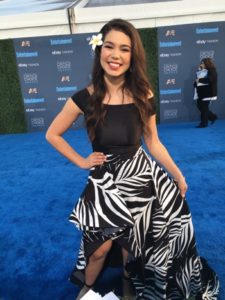
Auli’I Cravalho said, “I was actually discovered by Disney while auditioning for a part at my school in Hawaii. I’ve been working on this film for about a year and a half, and I’ve been singing all my life. I remember when I got the lyrics for ‘How Far Will You Go’ by Lin-Manuel Miranda, and I was in complete and awe of the song. He’s up for the best song award tonight, and of course, I hope he wins.
“It’s been an incredible journey, and I’m so proud of the film. I’m living the dream and so happy I was able to be a part of such an amazing project. Moana is such a beautiful, strong woman, and I hope to be able to play more parts like her.”
Ron Clements, the co-director of Moana and John Musker, the other director, had plenty to say about the film and its stars. Osnat Shurer, the producer of Moana, offered interesting details.
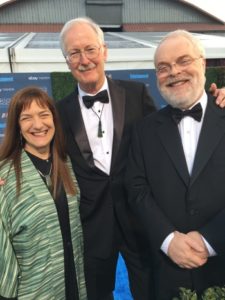
John Musker said, “It was five years in the making. We took a trip to the Pacific Islands to do research. Very tough job. Had to go to Fiji, Samoa, Tahiti, all to research. Our lovely star’s down the carpet in front of us, Auli’I Cravalho, who we found in Hawaii.
“She was just 14 and had never done anything like this before. The last person we auditioned. We loved her voice, and we flew her to Burbank and had her read again for the part. We cast her from that. She just turned 16 the other day.”
Osnat Shurer said, “Over 700 artists from all over the world worked on the film, so for us to share it with the world now is magical.”
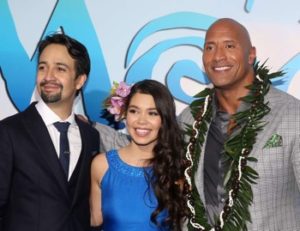
Ron Clements said, “We got very lucky on this movie. Not only did we find Auli’I, who is a major, major talent, but also we have the sexiest man in the world, Dwayne Johnson. To top it off, we met this guy Lin-Manuel Miranda in New York. Seemed like he might have some potential.”
Musker, said, “Three months after that, Hamilton hit the stage. The stage hasn’t been the same since. We’re very lucky.”
I said to them, “I have to ask about the tattoos. What a cool idea to have them move and talk to Maui (Dwayne Johnson) and you didn’t overuse the technique.”
Musker continued, “That’s real. That’s what they all have. It’s a part of their culture. Dwayne has a bunch of tattoos that really tell his story. They’re a rite of passage in the Pacific Islands. The moving tattoos were something we thought we could do in animation. And no other medium in live-action could do an effect. Eric Goldberg, the man who animated the Genie in Aladdin, did the effects. He’s the man who brought those tattoos to life.”
Shurer said, “He’s kind of his conscience. He’s like Maui’s conscience. Sort of his Jiminy Cricket. Whenever Maui gets a little too blustery, there’s his conscience like, ‘Hello.’ The tattoo can cut him down to size. It was fun, just a fun relationship.
“We also had … One of the characters was the Pacific Ocean, which was also kind of a challenge to pull off. In the movie, the ocean is actually alive and has a thought process. It interacts with Moana. They have a relationship. That came from our trips to the Islands, because so many people we met talked about the ocean as if it were alive. They had their own personal relationships.”
I asked, “What’s next on your agenda?”
Clements said, “We go to Samoa tomorrow.”
Musker said, “Actually, we do. Yeah. We’re going to present the film to the President of Samoa. We spend a week there. We’re still rolling out the film to Scandinavia and Japan after the first of the year.”
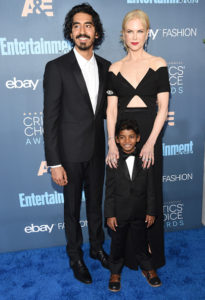
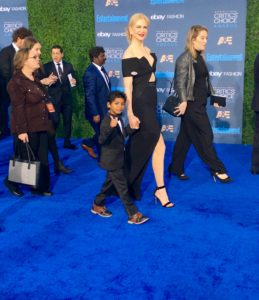
Lion composers Volker Bertlemann, AKA Hauschka, and Dustin O’Halloran spoke about their involvement in the film and the time frame.
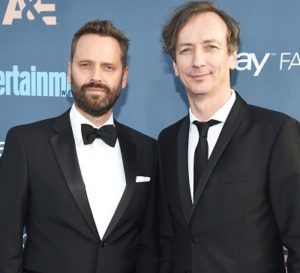
I began by saying, “I totally loved this film, and it’s in my top 10 best films of 2016 list. You must be so proud of it. When did you begin the score?”
Dustin O’Halloran said, “Well, when we came in, and we were sort of the last players to be involved in the film, they had filmed it and were close to the final cut. We had about two months to do the score. We really had to dive in, pretty deep. It was a lot of searching for the right tonality and the right balance of emotions and getting to the heart of it.”
I replied, “Yes, the film has so many layers to it.”
“We just lived and breathed it for two months, really,” said O’Halloran.
Hauschka commented, “But at the same time, you know, it’s great that we could leave a couple of scenes quite silent. Quite silent, because they were already so well done. Many times, it’s the other way around. You have to, in a way, try to find a way of getting the scenes better with music. We didn’t have that struggle.”
I asked, “I have my ideas about what a score should do for a film. What do you envision when you compose a score?”
O’Halloran said, “Well, for this film, it’s a really emotional tale, and we wanted it to be emotional. Garth really pushed everybody, the actors and us included, to give something from their hearts. He really searched for that. I think that … This was rare, for film, that they wanted so much of ourselves in it. That’s actually very hard. It’s emotionally draining.
“There’s a lot … Even if you can’t, you haven’t lived an incredible story like this. We all have felt longing. We all share the universal feelings of family. I think that that’s something that everybody had to tap into, to be a part of the film.”
I replied, “Right. You can’t help but be touched by it. Hey, is Dev [Patel] or Sunny [Pawer] here tonight?”
O’Halloran, “Yes, they are both here. Sunny is an amazing little boy. You’re going to fall in love with him.”
“I already am,” I replied.
Rob Legato, a two-time Academy Award winner for special effects, talked about The Jungle Book and the film’s special effects.
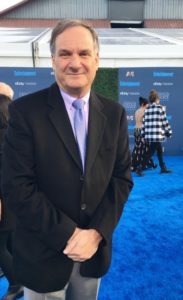
Legato said, “It was a thrill to actually work on the film and kind of come up with a new way of telling a story, which is an old way of telling a story, just to make it look like it’s a ‘photo-real film.’ Don’t show off your tricks, don’t show off all your CG stuff, and just make a real-looking film. Beautifully photographed and beautifully acted. And do naturalistic things.
“We photographed, and we didn’t do any kind of camera move or any kind of lens choice that you could not do for real. We were pretty religious about it, so that the net experience for the audience reminds them of films they’ve seen before. If you did all CG kind of stuff, it would remind you of a CG film. It wouldn’t remind you of a real film.”
I said, “And that’s not what you were looking for.”
Legato continued, “That’s not what we were looking for. It’s like the suspension of disbelief, like, ‘Oh, I’m watching a real thing, forget how it’s done.’ In fact, it shouldn’t matter how it’s done. It should only matter what kind of film you made.”
Disney films can include sad themes or frightening sequences. In The Jungle Book, a boy-cub, Mogli, is hunted by a tiger named Shere Khan. There are other animals and scenes that may be too frightening for kids under five years of age. Also, the film itself is dark in color. Deep in the jungle, it’s dark, so in this realistic rendition, the film had a very little light added. This makes the theater dark and creates an even more frightening experience. I wanted to ask Legato about the scary factor for kids.
Legato said, “It’s sort of the Disney tradition of having these sort of scary things in their films. It’s kind of the balance; there’s this joy in the world, and then there’s also these scary things, like Bambi. I mean, what’s scarier than that? What our drive was to do it as tastefully as Walt [Disney] would have done it. And Walt would have approved of doing it, so that it makes well rounded, essentially for kids, where the world is not all happiness and lovely things. There are some scary parts. If you could overcome them, you do pretty well. That was the drive. It wasn’t to sanitize it and get rid of it. It’s, you’re in the jungle and you’re being stalked by a tiger.”
I added, “And these are real animals, and you don’t just go up to them and try to pet them.”
Legato replied, “Do not go up and try to pet them. That’s probably a good lesson for that movie too. They don’t speak as nicely as they did.”
I asked about working with James Cameron. “You’ve done other things, though. Titanic, I believe?”
Legato said, “He’s a stone cold genius of an engineer and artist. All those things wrapped up in one. Difficult, because he knows so much. The standard is so high. Everybody’s expected to play. It becomes fun to play at that level because then it’s like playing championship tennis. You play with somebody really good, ups your game quite a bit. It was really worthwhile, and we got along pretty well, because I’ve a real interest in science and the way things are done.”
“The joy of delving in, of doing something hard and difficult—and yet, pulling it off. It’s a good thing for my career, is that I don’t shy away from anything that’s hard and difficult. The rewards are pretty great.”
I said, “Oh, that’s fantastic. That’s great advice, actually. Are you working on anything new now?”
He answered, “I’m working on another small, minor challenge—The Lion King, actually.”
I said, “Just a small project, right?” (Laughing)
Legato said, “Minor. Throwaway art film. (Chuckling) It’s going to be a live-action Lion King. We hope to expand on what we learned in The Jungle Book and how we did it. And make an even more beautiful film, using these techniques but not using them to show those techniques. To show how well we can make a movie these days.”
“Well, I can’t wait for that one. Any stars attached to this one yet?”
Legato said, “I don’t know. I think they’re talking, so I’m not allowed to say anything. In case the deal falls through.”
“With the success of The Jungle Book, I don’t think it’s going to be too hard to get some actors for The Lion King.”
Sully is a harrowing film about a pilot who lands a plane safely in the Hudson River. Screenplay writer Todd Komarnicki talked about the authenticity of the book and the film. He spoke about Mr. Sullenberger and what he’s like as a person.
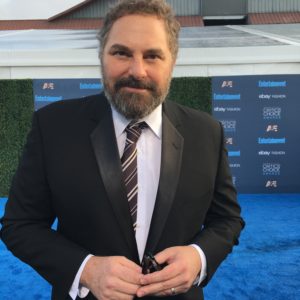
“He is class, head to toe. Ten minutes after meeting him, I had the complete understanding that, of course, this man landed a plane on the Hudson River. He just gives off that confidence. You want him to be in charge of getting your family somewhere safe.”
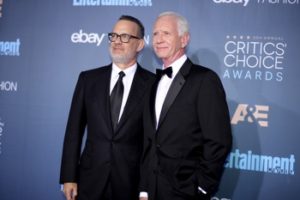
I said, “In the book, how true was it? Was there really a thirteen-month-old baby and a mother? Those scenes really got to a lot of people. While you worry about adults trying to survive, you’ve got this little baby, and it brings it all home, and you’re just like, ‘No!’ I mean tears, open the flood gates.”
“Absolutely. Completely true. The movie’s completely true. The only thing we compressed was the time from an eighteen-month investigation to four days. Everything else is true. That passenger, Jim Whitaker, offered to take the child because the mother was worried. He was part of the rescue, so it was about everybody pulling together and taking care of each other. That’s what’s so heroic about it. Nobody abdicated. Everybody showed up and gave them their full selves. Thank God,” said Komarnicki.
Komarnicki also talked about heroism and the need for people to step up in a crisis and be proactive.

Zootopia directors, Byron Howard and Rich Moore, talked about their five-year process of making the film. It took about a year of research, two years in script and story, then development, followed by two years of production. I told them that I had reviewed the DVD and all of the special bonus features. The fact that so many of the animators and cinematographers went to the African savanna and studied the wildlife was amazing. They both said that, as kids growing up, they appreciated those special films that talked about the making of a film and wanted to be sure to “give back” to this generation. As a former teacher, I applaud these efforts and enjoy the directors’ cuts and special features.
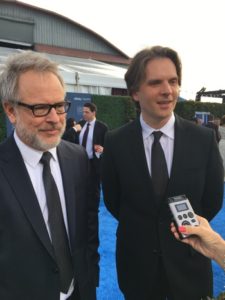
To see my Zootopia DVD review https://sarahsbackstagepass.com//zootopia-dvd-review-★★★★/
When talking about upcoming projects that Moore said he’s working on, I informed him that Jane Lynch, whom I’ve interviewed twice, lives near me in the Chicago suburbs. Howard told me he’s working on a project that is so secret he can’t tell anyone, including Moore.
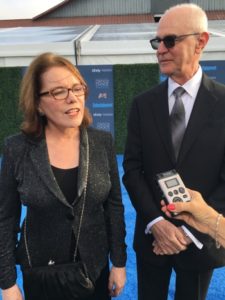
Jazz artist Lorraine Feather and film score composer Eddie Arkin collaborated together on the song “Rules Don’t Apply” from the film of the same name. They told me about the song’s beginnings and what it’s like to work with Warren Beatty, writer and director of, and actor in the film. Feather worked as a singer on Dick Tracy (1990), and she explained the process for writing the song.
“Warren gave us the concept for the song. He said, ‘So what if you are young, but you think life is passing you by? You think there’s some kind of unwritten rule that you have to be successful by a certain time in your life, and then if you’re not, you’re a failure, and time is just rushing by.’
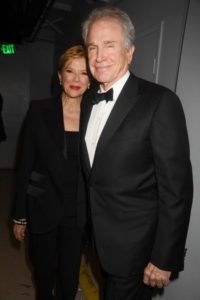
“I said, ‘I know what that’s like.” I have felt that way, when I was just ridiculously young.’
“He said, ‘Well, that’s what the song should be about.’ We wrote the song. We called it ‘The Rules Don’t Apply.’”
And just how “difficult” is Warren Beatty to work with? Arkin said, “When you hear about him, you know, being very fastidious and all, you do wonder. But, the first time he heard our song, he loved it, and I swear to you this has gone on for years now. You know, this movie has been not been an instantaneous thing. We’ve never changed a note or a lyric on the song since he first heard it. Lily Collins, the star of the film, sings the song ‘Rules Don’t Apply’ and does a fabulous job in the film.”
Feather said, “Beatty didn’t want her to do too many takes because he wanted her to keep that little shy quality that she has when she sings.”
Arkin continued, “You know, what’s interesting about it is that when you see these kinds of things in movies, they’re usually pre-recorded, and then the actor lip-syncs through it. She actually sang this live. Every take is a live take of her doing it. You get that immediacy and authenticity.”
I said, “Yes, she sang it so sweetly.”
Arkin replied, “And so poignantly. It was really cool.”
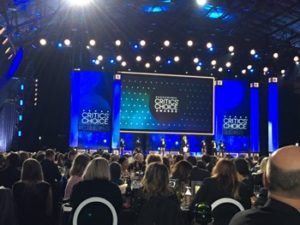



Winners of the 22ND Annual Critics’ Choice Awards Complete List
FILM:
BEST PICTURE – “La La Land”
BEST ACTOR – Casey Affleck, “Manchester by the Sea”
BEST ACTRESS – Natalie Portman, “Jackie”
BEST SUPPORTING ACTOR – Mahershala Ali, “Moonlight”
BEST SUPPORTING ACTRESS – Viola Davis, “Fences”
BEST YOUNG ACTOR/ACTRESS – Lucas Hedges, “Manchester by the Sea”
BEST ACTING ENSEMBLE – “Moonlight”
BEST DIRECTOR – Damien Chazelle, “La La Land”
BEST ORIGINAL SCREENPLAY – TIE: Damien Chazelle, “La La Land” and Kenneth Lonergan, “Manchester by the Sea”
BEST ADAPTED SCREENPLAY – Eric Heisserer, “Arrival”
BEST CINEMATOGRAPHY – Linus Sandgren, “La La Land”
BEST PRODUCTION DESIGN – David Wasco, Sandy Reynolds-Wasco, “La La Land”
BEST EDITING – Tom Cross, “La La Land”
BEST COSTUME DESIGN – Madeline Fontaine, “Jackie”
BEST HAIR & MAKEUP – “Jackie”
BEST VISUAL EFFECTS – “The Jungle Book”
BEST ANIMATED FEATURE – “Zootopia”
BEST ACTION MOVIE – “Hacksaw Ridge”
BEST ACTOR IN AN ACTION MOVIE – Andrew Garfield, “Hacksaw Ridge”
BEST ACTRESS IN AN ACTION MOVIE – Margot Robbie, “Suicide Squad”
BEST COMEDY – “Deadpool”
BEST ACTOR IN A COMEDY – Ryan Reynolds, “Deadpool”
BEST ACTRESS IN A COMEDY – Meryl Streep, “Florence Foster Jenkins”
BEST SCI-FI/HORROR MOVIE – “Arrival”
BEST FOREIGN LANGUAGE FILM – “Elle”
BEST SONG – “City of Stars” from “La La Land”
BEST SCORE – Justin Hurwitz, “La La Land”
TELEVISION:
BEST COMEDY SERIES – Silicon Valley, HBO
BEST ACTRESS IN A COMEDY SERIES – Kate McKinnon, Saturday Night Live, NBC
BEST ACTOR IN A COMEDY SERIES – Donald Glover, Atlanta, FX
BEST SUPPORTING ACTRESS IN A COMEDY SERIES – Jane Krakowski, Unbreakable Kimmy Schmidt, Netflix
BEST SUPPORTING ACTOR IN A COMEDY SERIES – Louie Anderson, Baskets, FX
BEST GUEST PERFORMER IN A COMEDY SERIES – Alec Baldwin, Saturday Night Live, NBC
BEST DRAMA SERIES – Game of Thrones, HBO
BEST ACTRESS IN A DRAMA SERIES – Evan Rachel Wood, Westworld, HBO
BEST ACTOR IN A DRAMA SERIES – Bob Odenkirk, Better Call Saul, AMC
BEST SUPPORTING ACTRESS IN A DRAMA SERIES – Thandie Newton, Westworld, HBO
BEST SUPPORTING ACTOR IN A DRAMA SERIES – John Lithgow, The Crown, Netflix
BEST GUEST PERFORMER IN A DRAMA SERIES – Jeffrey Dean Morgan, The Walking Dead, AMC
BEST MOVIE MADE FOR TELEVISION OR LIMITED SERIES – The People v. O.J. Simpson, FX
BEST ACTRESS IN A MOVIE MADE FOR TELEVISION OR LIMITED SERIES – Sarah Paulson, The People v. O.J. Simpson, FX
BEST ACTOR IN A MOVIE MADE FOR TELEVISION OR LIMITED SERIES – Courtney B. Vance, The People v. O.J. Simpson, FX
BEST SUPPORTING ACTRESS IN A MOVIE MADE FOR TELEVISION OR LIMITED SERIES – Regina King, American Crime, ABC
BEST SUPPORTING ACTOR IN A MOVIE MADE FOR TELEVISION OR LIMITED SERIES – Sterling K. Brown, The People v. O.J. Simpson, FX
BEST REALITY COMPETITION SERIES – The Voice, NBC
BEST STRUCTURED REALITY SERIES – Shark Tank, ABC
BEST UNSTRUCTURED REALITY SERIES – Anthony Bourdain: Parts Unknown, CNN
BEST REALITY SHOW HOST – Anthony Bourdain, Anthony Bourdain: Parts Unknown, CNN
BEST TALK SHOW – The Late Late Show with James Corden, CBS
BEST ANIMATED SERIES – BoJack Horseman, Netflix
